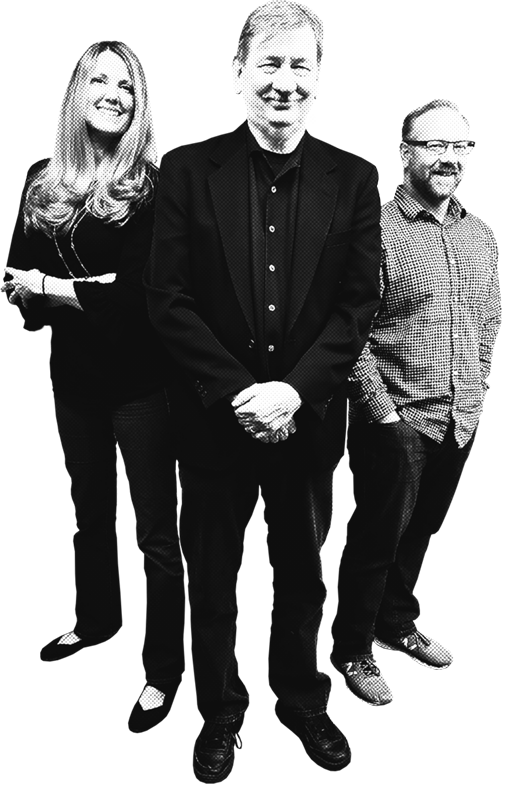Quality Site Criteria
The following are some of our personal criteria that you MUST
follow in order to have proper “curb appeal.” We strongly suggest that
you follow this quality site criteria at your site.
If you are applying for an award or a site review, before submitting a site, print this page and rank yourself. Fix what needs to be fixed, and come back… we’ll keep the page open!
- Backgrounds — Gaudy is out, especially on
professional commercial sites. Coloured text that is difficult to read is
out. And text over complex patterned backgrounds is definitely out. The
page must be clean, uncluttered, and very easy to read without hurting
the eyes. Black? Never. Have you ever tried to print a page where the
text is white against a black background and get a blank sheet from your
printer? Definitely not a commercial site advantage! White, off-white,
pale, or an exceptionally light texture is okay as long as it NEVER
detracts from the text and the images have impact. - Banners — None at the top of your page, and usually fewer than four on the page.
- Be Commercial — Who you are, What you do,
What makes you unique, Why use your products or services, and How you
can help solve a pain or need MUST be there. But it is not going to be
effective on the web if all you want is their money. Offer this
information, but take a backseat to content. Include it as links and
subliminal notes. Content is king, and selling without selling is the
way to be commercial. Clarity is important in your content and purpose. - Browser Compliant — We get 88% of our
traffic from Firefox, Chrome, and IE. The rest include spiders and text
browsers. Make sure that your page works well with all of these browsers
before submitting. We will look at your page with at least 3 different
browsers in this review. - Content — is KING. If you have no real
content that contributes to a visitors pain or need, then their visit is
not worth their time. Offer something they cannot get anywhere else. If
you need to, offer your opinion, but be sure that you are right. - Counters — These are effective on some
sites where there would otherwise be no credibility, but in content-rich
sites, the value of the content is far more important. Give me a great
link program any day. Lose the counter and use server logs for your
statistics. - Contact Technique — There must be a clear
method for contacting the company by completing a form, email, US mail
(street address), and telephone/fax. If there is no street address and
phone then it is assumed that you have something to hide. There must be a
clear navigation to a contact page. - Doorway Pages — Avoid doorway pages (also
called splash screens). Having us wait while a logo loads so that we can
be impressed enough to click to go to your content is not cool, and is a
waste of our time. - Excessive Animation and Flashing Text —
Flashing and twisting used to be cool, but isn’t anymore. Make sure that
your gadgets have purpose, slow them down, and if it does not add to
your message, don’t use them. They have gone from fun to annoying. And
they detract from your content. - Frames — We hate frames. We have seen some
very nice sites where the frames were well done and made sense to the
content of the page, and others where the frames were in the way. In the
event that your frames do not contribute to the site (navigation or
otherwise), this is a definite disqualification. - Graphics — The content of your page is
king, but you must have “curb appeal.” Like selling your house, if it is
ugly from the street, people drive by without going inside. But if it
is nice, they will enter and look around. Within this appeal, the
graphics must relate to your content, so they must be context sensitive
and appropriate. Compressing a graphic for speed is good, but do not
destroy the curb appeal of a nice graphic just for speed. Animated email
icons probably have little contribution to your content, so they
probably are more of a distraction than an advantage. Waiting for an
image to load takes forever sometimes, and many will not wait. - HTML — Do not worry about how “clean” your
HTML is unless it causes your page to look funny when switching between
browsers or monitor resolutions. Using site inspection tools is great,
and you must adhere to good practice in writing your page code, but if
you don’t see it, we think it is far less important than other items in
this list. - Image — The site must convey your
corporate image, however you define it. It must be appropriate for your
industry, clients, and appeal to your prospects. - Javascript — Do not over do it. Javascript
can be effective as a navigation aid (nice to know what button we just
rolled over in case we cannot read), but beyond that it had really
better have purpose. Telling me what our name is or what browser we am
using is not going to help your content. - Links — If they are broken (common where
you link off of your site), fix it before you submit. We run tools on
submitted sites to test their links for accuracy before We review them,
so don’t disqualify yourself. - Matching — The general design for the site
should all match. Visitors should feel comfortable that the look and
feel is similar while transitioning page-to-page, and that navigation is
always located at the same spot on the page. Changing the style within
the site is not recommended. - Navigation — Do not over do it. We prefer
to have navigation be obvious. Where possible, place key navigation
within the content and tell why it should be used. We hate to wait for
ten buttons to load at the top of the screen before we can navigate the
site. Likewise, we would expect every button to have a corresponding
text link at the bottom of the page. - Obvious Purpose — Make sure that top of
page text tells a visitor what they will get by staying at your site.
Don’t make them leave, let them know how you are going to relieve a pain
or satisfy a need that they have. - Plugins — Avoid them. If you include sound files make sure it starts “off” and has a control.
- Portals — These are a big deal now, but
will soon be a thing of the past. Avoid making them cluttered and
difficult to use. And since portals are to be fast loading, always cut
the graphics. - Screen Size — 85% of the world uses screen
resolution higher than 1024×768. Before publishing your website to the
public, check your pages at 1024×768 or higher to ensure compatibility. - Scrolling Messages — We want to know where
links go. We don’t want the distraction of a scrolling marquee at the
bottom of the page. But we like tickers where there is a scrolling text
that actually can be clicked and a link taken. - Size — Some think that this is important.
We do not. If the text is displayed right away even if the images are
still downloading, and if we can make a decision that we want to stay to
read the contents of that page without the images, then the page can be
very long. But if there are links on the page and you have any tables,
returning is tedious. We have large pages without tables, and the return
from a link is to where you left, not the top of the page. - Spamming — Do not babble, ramble, or
otherwise pack your content with worthless keywords. Having your
keywords appear within your displayed text is important as a promotion
tool, but the content is still king and must not be destroyed in the
process. - Speed — Display the text within 5 seconds,
and then the images. We hate to wait for a page to load images before
we can see if we want to be there or not. - Spelling — Get it right. Sure there will
be an ocasional [sic] typo, but these can be caught by proofing your
work and with the many word processors available today. Proofing is
vital, don’t allow typos where the wrong word happens to be a word that
is spelled correctly — such as Sue for Sure (missing r). - Tables — Avoid setting fixed-width tables wider than a screen width. If we see text scroll off the right of our screen, you lose.
- White Space — Use margins and spacing to
avoid a cluttered look. Never-ending text looks like too much to read,
so visitors won’t. Use some colour that is easy to read, but make sure it
is meaningful (we use blue heading level text). Indent text to cut down
on the length (page width) of each line to help it be easier to read. - Under Construction — Your site, if it is
to have current information, is ALWAYS under construction. Don’t place
any under construction signs on your site. And don’t claim to offer
information that is not there. - Unique Content — This is a touchy subject.
In general, but it needs saying, NEVER borrow content from anybody else
without prior permission. Always have unique information, or at the
least be first with your view of that information. Bruce Clay was first
in stating how to beat your competition in search engines, and others
have restated our methodology at their sites. That happens. But do not
take an entire section of another site. That is what links are for. - URL — You should have your own URL to be
taken seriously as a commercial site. Having a URL with a complex name
detracts from the visitors ability to reach your site, and makes you
look “poor.” Behave like a professional and demonstrate that you have
made an investment in your site other than just having one. Personal
sites, not having your own URL is just fine.
Before submitting a site, print this page and rank yourself. Fix what needs to be fixed, and come back… we’ll keep the page open!






